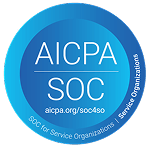FAQs
 What specific documents should Indian students include to demonstrate strong financial support for their F-1 visa application?
What specific documents should Indian students include to demonstrate strong financial support for their F-1 visa application?
Indian students should prepare a comprehensive financial documentation package that includes bank statements from both the student and sponsors (typically parents) showing sufficient funds to cover at least the first year of education (approximately US$45,000-US$70,000 or INR 37,50,000-58,30,000 for most universities). Fixed deposits, provident fund statements and property documents as collateral for education loans should be included if applicable. For students with education loans, bring the sanctioned loan letter from an international lender or an Indian bank showing the approved amount. If receiving scholarships or assistantships, include the official award letter detailing the stipend amount and tuition waiver. Consular officers typically require financial documents that are no more than three months old, so ensure all statements are recent and officially stamped by the issuing bank or institution.
 How should Indian students address questions about immigration intent during the F-1 visa interview?
How should Indian students address questions about immigration intent during the F-1 visa interview?
Indian students must demonstrate their “non-immigrant intent” by clearly articulating specific plans to return to India after completing their studies. Prepare to explain how your U.S. degree will create better career opportunities, specifically in India’s growing sectors like IT, engineering or health care, where international education is valued. Mention family businesses, property ownership or dependent family members who require your return. For engineering and computer science students, especially, highlight India’s booming tech industry and specific companies you aim to work for upon return. Avoid any mention of H-1B visas or permanent immigration intentions, but referencing CPT and OPT is fine. Practice explaining how skills gained in the U.S. will address specific needs in the Indian market, using data about growing industries in India to support your argument for returning home after graduation.
 What regional considerations should Indian students be aware of when applying for F-1 visas at different consulates within India?
What regional considerations should Indian students be aware of when applying for F-1 visas at different consulates within India?
Approval rates and interview approaches vary significantly among the five U.S. consulates in India (New Delhi, Mumbai, Chennai, Hyderabad and Kolkata). Chennai and Hyderabad consulates typically see higher approval rates for tech students, but may conduct more rigorous financial scrutiny. Mumbai experiences higher application volumes, resulting in longer wait times, particularly during summer months (May-July) when wait times can exceed 30-45 days. New Delhi interviews tend to focus more on academic preparation and English proficiency. Consider applying at consulates in regions where your academic credentials were earned, as officers may be more familiar with local institutions. Each consulate may have slightly different document requirements, so check the specific consulate’s website where you’ll interview. Recent trends show interviews are becoming shorter (often two to three minutes), so practice concise, confident responses to common questions.
 How can Indian students improve their communication skills specifically for the F-1 visa interview?
How can Indian students improve their communication skills specifically for the F-1 visa interview?
Indian students should focus on developing clear, accent-neutral English communication by practicing with native English speakers or watching American media. Record mock interviews and review them to identify areas for improvement, particularly avoiding overly formal or memorized-sounding responses. Practice answering questions concisely – aim for 30-second responses that directly address the question without unnecessary details or tangents. Work on eliminating Indian-English phrases and fillers like “actually,” “basically,” or “kindly.” Prepare for technical questions about your field of study that demonstrate genuine academic interest rather than immigration intent. Many successful applicants participate in interview preparation workshops offered by EducationUSA centers in major Indian cities or join study abroad preparation groups that conduct mock interviews. Additionally, practice maintaining appropriate eye contact and confident body language, which differs from traditional Indian communication styles where direct eye contact may sometimes be considered disrespectful.
 What strategies should Indian students use if their F-1 visa application is initially rejected?
What strategies should Indian students use if their F-1 visa application is initially rejected?
If your F-1 visa is rejected, request specific feedback from the consular officer regarding the reason under Section 214(b) or other grounds. Approximately 30% of Indian students who reapply after an initial rejection are successful on their second attempt. Wait at least 15-30 days before reapplying, using this time to address the specific concerns that led to rejection. For financial rejections, strengthen your application with additional financial documentation such as more liquid assets or a stronger education loan sanction letter from a reputable lender. For concerns about returning to India, gather more evidence of ties to India such as family business documents, property deeds or employment commitments after graduation. Consider applying to a different consulate within India for your second attempt, as practices and scrutiny levels vary. Many successful reapplicants also obtain additional letters from their U.S. university’s international student office addressing specific concerns raised during the first interview. Remember that each application is assessed independently, so a previous rejection doesn’t automatically lead to another if the concerns have been properly addressed.
